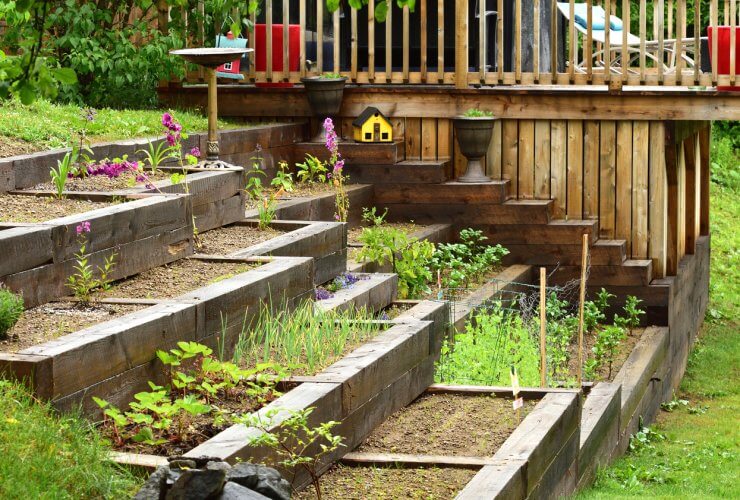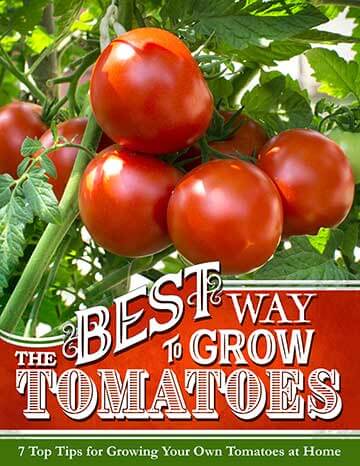
It creates runoff that spoils plants, causes ground instability, and damages your house’s structural integrity and curb appeal. Fortunately, there are ways to minimize risks and ensure your plots and beds suit your needs.
How Do You Mitigate Erosion Risks for Your Plants?
To support a vibrant, healthy food garden, you must ensure your ground is high quality and can withstand adverse weather conditions. Here are some ways to do this.
1. Use Strategic Gardening
Many plants assist in reducing the chances of erosion in your garden. They have extensive root systems anchoring the soil in place and soak up rainwater to reduce runoff. This is ideal if you want to maintain an organic garden, as runoff could contain pollutants or pesticides from other areas.
You can choose plants that are creepers to cover more ground. In addition, go for native plants that are more at home in the local soil composition.
2. Invest in Mulching
Mulching involves adding wood chips and straw to the dirt to provide a more resilient structure, better temperature regulation, improved water retention and less space for weeds to grow. You can add a few layers to achieve this. Avoid products like rubber mulch, though, which may come in interesting colors but put harmful particles in the ground.
3. Build Terraces
This step could cost a small fortune depending on the slope of your property, but terraces effectively reduce erosion. The small walls and nails can hold the earth together, minimizing its vulnerability and alleviating solidity failure even on soft soils. For example, launched soil nails exhibit more than 20% pullout capacity in sands and clays.
4. Incorporate Retaining Walls
Not only are retaining walls excellent for erosion control — they also offer various material and feature options for any style. Natural stone creates the illusion of your lawn’s landscaping being an incredible natural occurrence, while brick and steel are rustic and homey. It’s even possible to integrate steps and lights so you can get around easier, or a fire pit and seating area for entertainment.
Themed Landscaping Ideas for Your Garden
Want to start planning landscaping ideas to align with a theme? Here are some suggestions, though they operate best in strong soils.
Terraced Versatility
If you decide to go the terrace path, you have loads of landscaping choices. You can pick different types of plants for each terrace, like fruit-bearing trees in the topmost one, flowery shrubs in the middle, and vegetables and herbs in the third row. This gives your yard more variety and provides access to your fresh and organic food.
Another idea is to go by colors. You might opt for purple flowers for the top step, yellow for the middle section and red for the bottom. You could even add diversity to your outdoor space with some succulents, cacti and ornamental grasses.
Evergreen Aesthetics
The evergreen theme is all about selecting suitable flora. Opt for shrubs like holly and boxwood that thrive all year round and have extensive rootwork to keep your soil intact. If you plant pine trees, you’ll have an outdoor Christmas tree ready when the festive season arrives.
You can also add berry plants, as some are evergreen, competent creepers that provide dirt stabilization via their roots. You’ll get organic berries — which can be harder to get at a grocery store for a decent price in winter — for delicious pies and tarts right from your yard.
Functional Outdoor Settings
Areas without greenery will erode faster and become gullies that continue to widen. Here are some ideas for reducing the amount of bare ground people can walk on:
- Fire pits and seating areas: Having a place to rest and relax could reduce your guests walking about when they visit.
- Walkpaths: Add walk paths to ensure people use them to move about These also promote organic, no-till gardening practices by preventing crop destruction.
- Decks and patios: If you love exercising or simply basking in the garden, consider adding a patio. Similar to fire pits, decks in your yard can minimize trodding on the soil. They’re also wonderful places to eat some of your fresh-grown food while admiring your holiday decorating efforts.
Best Planting Practices
Your garden design can further strengthen the soil, make the space functional and add to its festive appeal. However, there are some things you must remember to ensure a thriving garden. Among them are:
- Do some research: Thoroughly survey and choose climate-appropriate species most suitable for the soil type and the weather. This may include avoiding plants normally associated with the holidays, such as poinsettias. If it’s not native, don’t plant it.
- Avoid overwatering: Overwatering the plants could contribute to Find out the plant’s water and sunlight requirements before adding them to your terrace.
- Maintain regularly: Consistent maintenance and inspection are vital to catching signs of erosion early and mitigating issues promptly and efficiently. This will also ensure your organic methods are working to keep your food and plants healthy despite cooler temperatures and aesthetic changes.
Seasonal Landscaping Is Possible for Erosion-Prone Gardens
Your garden can still shine even if it is prone to collapse. Ensure you take the necessary steps to keep the dirt underneath intact and healthy and choose suitable and strategic landscaping ideas to increase its beauty further. Incorporate one of these techniques to have the most sparkling home on the block.
Discover 7 top tips for growing, harvesting, and enjoying tomatoes from your home garden—when you access the FREE guide The Best Way to Grow Tomatoes, right now!




